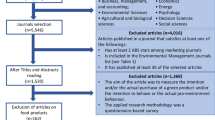Abstract
The 4th Amendment of the United States Constitution protects American citizens against unreasonable search and seizure without probable cause. Although law enforcement officials routinely rely solely on the sense of smell to justify probable cause when entering vehicles and dwellings to search for illicit drugs, the accuracy of their perception in this regard has rarely been questioned and, to our knowledge, never tested. In this paper, we present data from two empirical studies based upon actual legal cases in which the odor of marijuana was used as probable cause for search. In the first, we simulated a situation in which, during a routine traffic stop, the odor of packaged marijuana located in the trunk of an automobile was said to be detected through the driver's window. In the second, we investigated a report that marijuana odor was discernable from a considerable distance from the chimney effluence of diesel exhaust emanating from an illicit California grow room. Our findings suggest that the odor of marijuana was not reliably discernable by persons with an excellent sense of smell in either case. These studies are the first to examine the ability of humans to detect marijuana in simulated real-life situations encountered by law enforcement officials, and are particularly relevant to the issue of probable cause.
Similar content being viewed by others
REFERENCES
Doty, R. L. (1975). An examination of relationships between the pleasantness, intensity, and concentration of 10 odorous stimuli. Perception and Psychophysics, 17, 492-496.
Doty, R.L. (1995). The Smell Identification Test TM administration manual (3rd ed.). Haddon Heights, NJ: Sensonics, Inc.
Doty, R. L., Shaman, P., Applebaum, S. L., Giberson, R., Siksorski, L., & Rosenberg, L. (1984). Smell identification ability: Changes with age. Science, 226, 1441-1443.
Doty, R. L., Shaman, P., & Dann, M. (1984). Development of the University of Pennsylvania Smell Identification Test: A standardized microencapsulated test of olfactory function. Physiology and Behavior, 32, 489-502.
Draper, v. United States, 358 U.S. 307, 79 S.Ct. 329, 3 L.Ed.2d 327 (1959).
Hemphill, J. K., Turner, J. C., & Mahlberg, P. G. (1980). Cannabinoid content of individual plant organs from different geographical strains of Cannabis sativa L. Journal of Natural Products, 43, 112-122.
Hood, L. V. S., & Barry, G. T. (1978). Headspace volatiles of marijuana and hashish: Gas chromatographic analysis of samples of different geographic origin. Journal of Chromatography, 166, 499-506.
James, W. (1890). Principles of psychology. New York: Holt.
Marks, L. E. (1988). Magnitude estimation and sensory matching. Perception and Psychophysics, 43, 511-525.
Moskowitz, H. R., Dravnieks, A., Cain, W. S., & Turk, A. (1974). Standardized procedure for expressing odor intensity. Chemical Senses and Flavour, 1, 235-237.
Ross, S. A., & El Sohly, M. A. (1996). The volatile oil composition of fresh and air-dried buds of Cannabis sativa. Journal of Natural Products, 59, 49-51.
Smith, R. S., Doty, R. L., Burlingame, G. K., & McKeown, D. A. (1993). Smell and taste function in the visually impaired. Perception and Psychophysics, 53, 649-655.
Turner, J. C., Hemphill, J. K., & Mahlberg, P. G. (1980). Trichomes and cannabinoid content of developing leaves and bracts of Cannabis sativa L. (Cannabaceae). American Journal of Botany, 67, 1397-1406.
United States of America v. Ronald J. Boger, 755F. Supp. 333 (1990).
United States of America v. Deborah, Ellis, 15F. Supp. 2d 1025 (1998).
United States v. Harris, 31F.3d 153, 156 (4th Cir. 1994).
United States of America v. Keven C. Reilly, 875F. Supp. 108 (1994).
United States of America v. Norris, Shates, 915F. Supp. 1483 (1995).
Van Langenhove, H., & Schamp, N. (1989). Encyclopedia of environmental control technology (Vol. 2, pp. 935-963). Houson: Gulf Publishing.
Author information
Authors and Affiliations
Corresponding author
Additional information
(Dr. David A. Marshall is deceased)
About this article
Cite this article
Doty, R.L., Wudarski, T., Marshall, D.A. et al. Marijuana Odor Perception: Studies Modeled from Probable Cause Cases. Law Hum Behav 28, 223–233 (2004). https://doi.org/10.1023/B:LAHU.0000022324.13389.ea
Issue Date:
DOI: https://doi.org/10.1023/B:LAHU.0000022324.13389.ea




